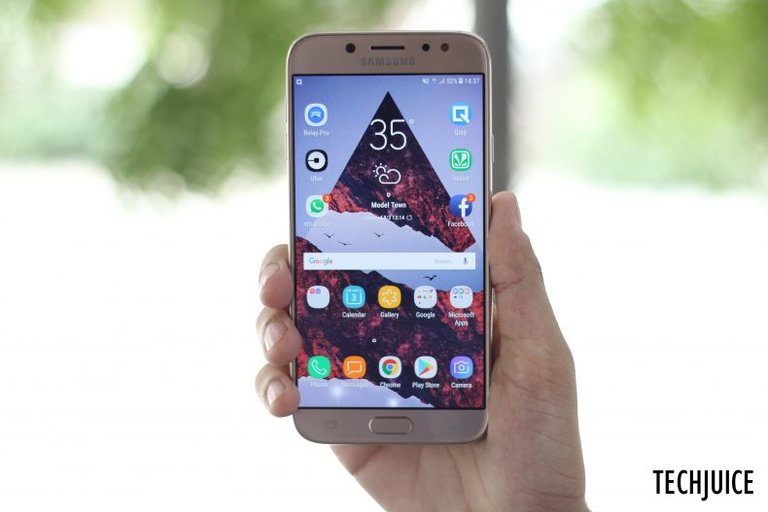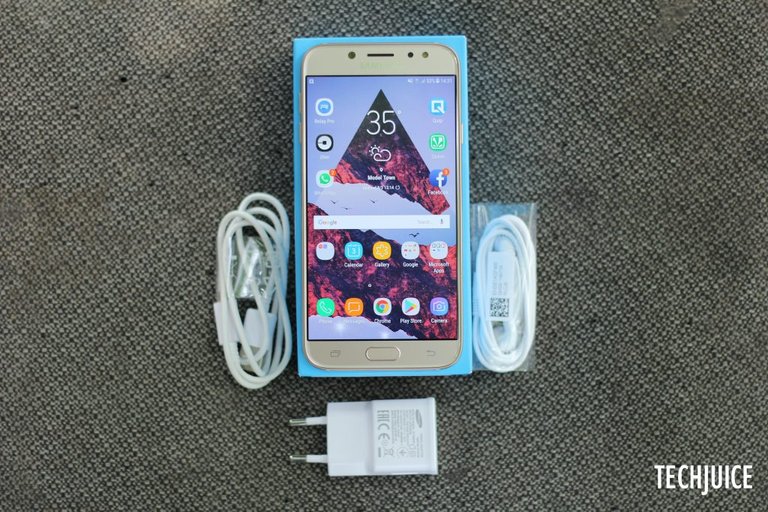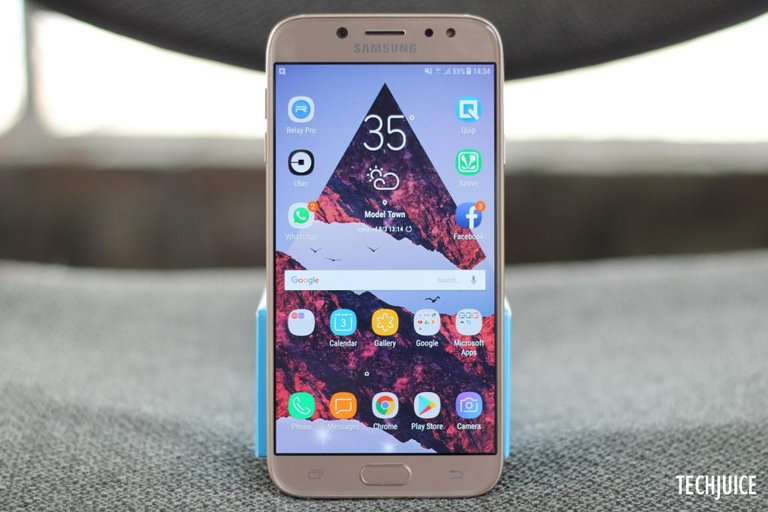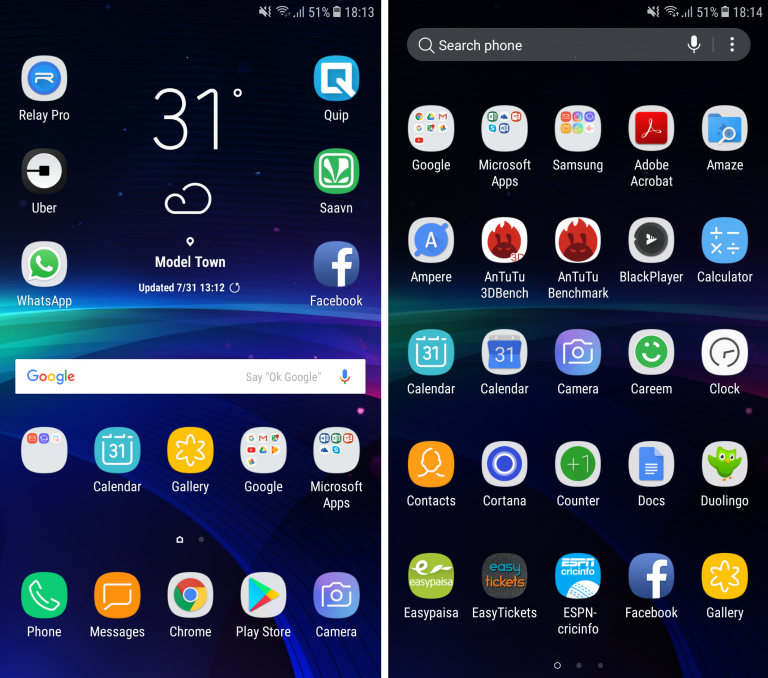 Samsung isn’t known for producing very cheap or cost-effective phones, at least not these days. What it is known for is cramming very good build quality, brilliant screen and very decent cameras in almost all the phones that they manufacture. This is the consensus in almost all the Samsung phones that we have reviewed in the past. Galaxy J7 Pro is expected to leave the same impression towards the customers.
Samsung isn’t known for producing very cheap or cost-effective phones, at least not these days. What it is known for is cramming very good build quality, brilliant screen and very decent cameras in almost all the phones that they manufacture. This is the consensus in almost all the Samsung phones that we have reviewed in the past. Galaxy J7 Pro is expected to leave the same impression towards the customers.
Before I move on towards the detailed Samsung Galaxy J7 Pro review, let me make something clear. Do not be fooled by the pro branding on this device. This isn’t some super-charged or incredibly beefed up version of the J series of devices. It could easily have been called J7 (2017) and no one would have been too surprised by the offering. Here are the specifications offered by the Galaxy J7 Pro:
5.5- inch FullHD (1920 x 1080p) AMOLED display
3GB RAM and 16 GB internal storage capacity with microSD card support of up to 256 GB
3600mAh non-removable battery
1.6GHz octa-core Exynos 7870 processor with Mali-T830MP2 GPU
Android 7.0 Nougat with Samsung Grace UI
The good, the bad, and the ugly
Each device has some good points and some negative points. The features which help this device stand out from the crowd are:
Brilliant display quality
Good battery life
Great camera experience
Premium build quality
Despite these points, there are still some issues which must be kept in mind before you decide to purchase this device.
No fast charging support
16 GB internal storage in base model
Price seems a bit high for the whole package

Like most Samsung phones, the contents of the box are minimal and you only get the essential items to get your device up and running. Here’s a detail of all the items available to you after opening the Galaxy J7 Pro box:
5V/1.5A charger (no fast charging support)
Standard length USB-A to micro USB cable
3.5 mm Handsfree with microphone and call accept/reject button (no volume control buttons)
SIM card eject tool
Warranty and product information
Design and build quality
If there is one thing which can be attributed to Samsung phones of the past couple of years, it is their exceptional build quality. This device, with its part glass, part metal design, does not disappoint in that department either.
The front of the device is full glass and has the usual three key system used by Samsung devices. The whole front panel is covered by Gorilla glass of unknown specification. It extends beyond the display over the front camera, front flash, and the earpiece

The backside of the device is all metal and has two antennas on the top and bottom for better signal reception. There is a 13 MP camera along with a flash on the backside which is accompanied by a carved Samsung logo. There is Duos branding below that which indicates the dual SIM nature of the device
Display
As mentioned at the start of the review, Samsung phones are typically known for their good displays. Galaxy J7 Pro is no exception. Its FullHD AMOLED screen is perfectly suitable for a phone in this price range. It offers good color reproduction, very deep black levels and accurate contrast. On top of that, the display is very sharp with a pixel density in excess of 400 ppi. Considering the price range, there is absolutely nothing which I can say bad about the display.
A benefit of the AMOLED panel is that Samsung can pack in some goodies like the Always on Display. What this does is keep the display on in a low power mode and provide useful information like the current time, battery percentage, pending notifications, media controls and much more.
Software experience
With the launch of Galaxy S8 and S8+ earlier this year, Samsung debuted a new and improved user experience. Known internally as Samsung TouchWiz Grace UI and simply dubbed as Samsung experience throughout the device, it is the simplest UX by Samsung yet. It’s stable, fast, easy to use and looks pretty clean. Overall, the software experience on Samsung has evolved a lot since early TouchWiz days.

J7 Pro is the first mid-range phone to feature this new Samsung software experience. It runs pretty well on the provided hardware and there doesn’t seem to any stability issues or rough edges. Its minimal user interface is easier on the eyes and takes the focus off of the experience and shifts it more towards the actual applications.